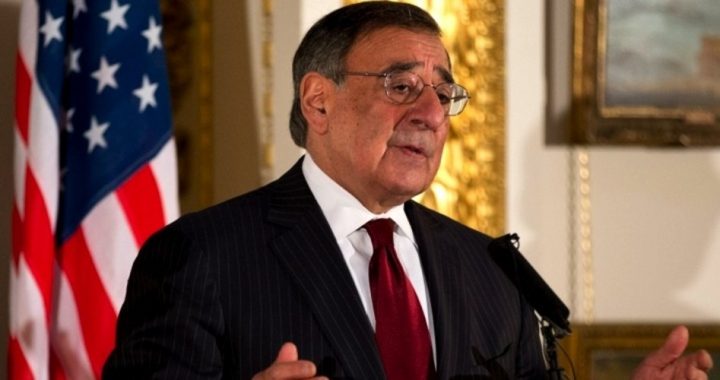
U.S. Secretary of Defense Leon Panetta (shown) is set to lift the ban on women serving directly in combat, Pentagon officials said January 23. The move comes 10 years after the Department of Defense (DoD) began allowing large numbers of female military personnel serving in support positions to be placed in harm’s way in Iraq and Afghanistan. It also comes in the face of overwhelming counsel against the move from veteran front-line soldiers and officers, who warn of the impact on troop morale and combat readiness if women are allowed to serve in infantry and other combat positions. According to Pentagon spokesmen, the lifting of the ban was to be announced officially January 24 by Panetta and Army General Martin Dempsey, chairman of the Joint Chiefs of Staff.
The Army Times noted that women currently serve in a number of non-infantry combat positions, piloting warplanes and manning ships in combat areas. According to the Pentagon, since the beginning of the Afghanistan/Iraq conflict, 292,000 women have served in those combat zones, 152 women have died (mostly of combat-related injuries), and 958 have been wounded.
According to the Congressional Research Service, modifications to women serving in combat areas began in 1994. Up to now women could not be assigned “below the brigade level — a unit of about 3,500 troops — to fight on the ground,” explained the Army Times. “Effectively, that has barred women from infantry, artillery, armor, combat engineers and special operations units of battalion size — about 700 troops — or lower.”
The Pentagon officials said the service branches would now have until 2016 to fully integrate women into combat positions and to make their case for disallowing them from those areas where their presence would be a detriment.
The announcement comes as the White House prepares to replace Panetta with a new defense secretary, and while Congress has 30 days to consider the changes, some Republican lawmakers were upset that word was leaked to the press before Congress was duly informed. “It is unacceptable that information on the Defense Department’s plans related to women in combat was leaked prior to Congress being briefed,” said Senator James Inhofe (R-Okla.), the ranking member of the Senate Armed Services Committee. “As a result, we don’t yet know the details of this announcement. Based on my conversation today with Deputy Secretary of Defense Ash Carter, I believe that Secretary Panetta will provide specific direction to the services on how to evaluate and identify opportunities for women to further serve their country.”
Inhofe predicted that the change would not result in an immediate influx of women into combat jobs, citing logistics and safety considerations. “I do not believe this will be a broad opening of combat roles for women,” he said, “because as the 2012 report indicated, there are ‘serious practical barriers which must be resolved so that the department can maximize the safety and privacy of all military members while maintaining military readiness.’”
The military newspaper Stars and Stripes reported that in November four women, along with a lobbying group called the Service Women’s Action Network (SWAN) sued the Defense Department over its exclusion of women from combat, charging that such a ban “sends a clear message to the world that women are not capable of serving their country to the same extent as men.” Anu Bhagwati, the director of SWAN and a former Marine officer, applauded Panetta’s move as “a victory for all the women who served in Iraq and Afghanistan, and didn’t always get the credit they deserved.” She argued that “this isn’t about quotas. It’s about the right to compete for a job. If you can do an MOS, you should get it.”
Similarly, Nancy Duff Campbell of the National Women’s Law Center crowed, “Hip, hip hooray” at the news. “Secretary Panetta’s decision to lift the direct combat exclusion both opens the doors of opportunity to all women in the Armed Forces and eliminates the last vestige of government-sanctioned sex discrimination in the United States. Now if the best person for the job is a woman, she will no longer be barred from that job simply because of her gender.”
Some women lawmakers agreed that the move was all about leveling the playing field for women. Senator Kirsten Gillibrand (D-N.Y.) predicted that putting women next to men in combat would serve to “strengthen our country both morally and militarily.” She added that it represented “the step we need to formally recognize the brave women who are already fighting and dying for our country shoulder to shoulder with their brothers in uniform on the front lines.” And Senator Mazie Hirono (D-Hawaii) called the change “a great step toward equality,” arguing that “restrictions that block women from serving in active combat roles make no sense in today’s modern military.”
By contrast, U.S. Representative Duncan Hunter (R-Calif.), who served in Iraq, said the move was “totally out of left field…. The question you’ve got to ask yourself every single time you make a change like this is: Does it increase the combat effectiveness of the military? I think the answer is no.”
Representative Tom Cotton (R-Ark.) warned that placing women in combat amounted to a recipe for a weakened military. “To have women serving in infantry … could impair the mission-essential tasks of units,” Cotton told conservative talk radio host Laura Ingraham. “And that’s been proven in study after study, just from a matter of — it’s nature, upper body strength, and physical movements, and speed, and endurance, and so forth.”
Retired U.S. Army Lieutenant General Jerry Boykin, a combat veteran, original member of the Army’s Delta Force, and former commander of the Army’s Green Berets special forces unit, offered his grave concerns over the move. “Women have been in combat since the United States began combat operations in Afghanistan in 2001,” noted Boykin, who serves as executive vice president of the Family Research Council. “They have fought and served with distinction. However, placing women in infantry and other front line units is a different issue and it has nothing to do with their courage or capabilities.”
Boykin charged that those pushing for the change have little understanding of what infantry and special forces troops face. “These units have the mission of closing with and destroying the enemy, sometimes in close hand-to-hand combat,” said Boykin. “They are often in sustained operations for extended periods, during which they have no base of operations nor facilities. Their living conditions are primal in many situations with no privacy for personal hygiene or normal functions. Commanders are burdened with a very heavy responsibility for succeeding in their mission and for protecting their troops.”
He warned that integrating women into such situations “places additional and unnecessary burdens on leaders at all levels. While their focus must remain on winning the battles and protecting their troops, they will now have the distraction of having to provide some separation of the genders during fast moving and deadly situations. Is the social experiment worth placing this burden on small unit leaders? I think not.”
In 1992, the presidential Commission on the Assignment of Women in the Armed Forces determined by majority vote that women had no place in direct combat on land, in the air, or on submarines and amphibious vessels. A summary within the “Alternate Views” section of the commission’s report noted that in its intensive, eight-month study, the commission concluded that assigning women to combat would: 1) “adversely affect the critical components” of combat readiness, unit cohesion, and military effectiveness; 2) “leave women exposed to the possibility of involuntary assignment to combat and conscription”; and 3) “overturn two centuries of settled law and military policy based on deeply held and commonly shared cultural assumptions defining how men should treat women.”
Colonel Ron Ray (USMC, retired), a decorated Vietnam veteran and a member of the presidential commission, told The New American that “across the world men and women do not compete together in sports in the high school, college, Olympic, or professional levels of sport, and it is solely because their physical differences are substantial.” As a combat veteran, Ray lived through a brutal 1967-68 combat tour in Vietnam, including the infamous Tet Offensive. He said that what holds true in athletics is of life-and-death importance on the battlefield. “From my own personal experience,” said Ray, “I can attest to the fact that physical combat, close combat, infantry, artillery, armor combat — all are profoundly more demanding than any sport, and there is no place there for women combatants.”
Col. Ray recalled that in the course of the presidential commission’s intensive study of the issue, its members questioned many combat and other military personnel, “including a survey of all retired flag and general officers. A consistent and extraordinary majority of those officers strongly opposed women serving in the combat arms including combat aircraft. The primary concern was the adverse effect on unit cohesion.” Ray noted that those concerns were a product of the wartime experience of the warriors, a concern that has been “confirmed again by the widespread sexual misconduct occurring with officers of all ranks today.”
With wry humor Ray recalled that Israeli military historian Martin van Creveld, speaking before the 1992 commission, summed up the ludicrous nature of the fixation a small minority of individuals have over putting women in combat. “You Americans are funny,” Creveld told the commission. “You spend $4 million and a year to decide what we in Israel would decide over lunch: Women don’t carry anything heavier than their purse in the Israeli armed forces.”



